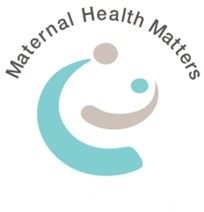We should take the opportunity to ensure safe and respectful maternity care for all women.

As a society we require rigorous data, to evaluate outcomes and identify poor quality maternity care.
Data holds key: It demonstrates the size and nature of problems, and brings clarity around who is falling through the cracks.
An improved national maternity data collection system:
– will inform future strategies;
– maximise the return on investment;
– minimise wastage of limited financial resources, promote accountability; and
– most importantly achieve safe, appropriate maternity services for women and their infants.
Step one: Set maternity care standards that matter and that promote optimal health
The World Health Organisation states – In normal birth there should be a valid reason to interfere with the natural process; 85% of births do not require interventions. As caesarean section rates rise towards 10% across a population, the number of maternal and newborn deaths decreases. When the rate goes above 10%, there is no evidence that mortality rates improve (2015).
In Australia Woman-centred care: Strategic directions for Australian maternity services (The Framework) provides the overarching national strategic directions to support Australia’s high-quality maternity care system and enable improvements in line with contemporary practice, evidence and international developments.
The Clinical Practice Guidelines: Pregnancy Care (The Guidelines) provide high quality evidence-based guidance to maternity service providers and consumers.
However there is no understanding of industry compliance with The Guidelines or The Framework, placing women at risk when care is not based on evidence.
Step two: Publish outcome data for individual health professionals and maternity care services.
Linking The Framework and The Guidelines to outcomes and reporting publicly will explicitly require organisations to address unwarranted interventions that do harm.
Clinical audit is about measuring the quality of care provided against relevant standards. Clinical audit identifies the disparities in practice between different parts of the maternity care system, as well as between individual institutions and clinicians. It helps in understanding the factors that are contributing to the outcomes so that priorities can be set and improvements made. Clinical audit exerts pressure on health services to investigate the variations.
Surprisingly, we may find it is not the women who are the problem.
Publishing the outcome data for each organisation and professional would enable women to make an informed decision. Output measures for assessing acceptability, efficiency and safety of maternity services should ideally reflect the values and principles of woman-centred care – safety, respect, choice and access. For example, it enables women to choose the provider who consistently delivers her preferred outcome for care.
Some data examples:
- Report a core suite of outcome data by clinician and place of birth, both public and private;
- Report the percent of women who have access to midwifery led continuity of care;
- Compliance rates with providing unbiased information and obtaining informed consent;
- Report breastfeeding rates at six weeks postpartum by maternity service and clinician;
- Report postnatal depression rates by maternity service and clinician;
- Report the percent of women who develop postnatal depression who identify their maternity care as disrespectful;
- Report longitudinal data on the impact of maternity related illness for the woman and her child; and
- Report all data by parity. Aggregated trended data can be deceptive and therefore not useful.
Step three: Make use of sanctions
There needs to be logical consequences if maternity services and health professionals do not comply with evidenced informed practice.
Health professionals are called to account for their practice at Clinical Review or Mortality and Morbidity Committees, behind closed doors. Today we see Royal Commissions and Investigations only after it is apparent there has been long term systemic failure.
Organisations that continually provide maternity care that is not best practice should be required to improve outcomes or have their funding reduced. This is just as relevant for private maternity services as it is for public maternity services.
We should take the opportunity to ensure maternity care is safe and respectful for all women.
